💬'Practice' in Google Translate: A new, free language learning option
I'm always looking for the best ways to improve my Spanish. This new AI tool focuses on listening and speaking. Here's how it works, and what I think about it.
I’m committed to learning Spanish, and I believe that anyone who lives abroad, or spends a lot of time in another country, should try to learn the language.
But I have to admit, it’s tough. I’ve been studying Spanish since early 2022, when we bought our Mexico City apartment, and I can still only manage basic conversations. People who talk fast or change the topic leave me scrambling to catch up.
For all our tips, recommendations, and itineraries, grab a copy of Eternal Spring: Our Guide to Mexico City. It’s optimized for your phone, with links to everything you need for your trip.
I’ve tried Duolingo, virtual tutoring and classes with iTalki, Pimsleur, various podcasts, reading short stories, watching videos, and more.
There are pros and cons to all of them, but my biggest struggle is taking all the vocabulary and grammar I’ve learned and being able to draw on it quickly when I’m listening and speaking in a conversation.
I’m intrigued by a new tool that’s part of Google Translate. I’ve only been using it for a few days, but I can see its value in filling in my language-learning gaps.
📈What is “Practice” in Google Translate?
Practice is a way you can use AI in Google Translate for listening and speaking exercises, to build these skills.
Right now, you can use it to learn:
Spanish as an English speaker
French as an English speaker
English as a French speaker
English as a Portuguese speaker
English as a Spanish speaker
I’m using it to learn Spanish as an English speaker, and I can choose from basic, intermediate, or advanced levels. It appears as though a “just starting” level will be rolled out at some point.
You can also pick a goal or create your own scenario. For my goal, I chose “Practice basic Spanish for travel.”
You could also choose goals like:
Travel to a new country
Get a better job
Talk to your partner and their family
Get around a new city
Practice isn’t heavily gamified like Duolingo, but it encourages you to do three daily activities, either listening, speaking, or both, and it keeps a running total of the number of words you’ve practiced.
🗣️How do you use Google Translate practice?
After you choose or create a scenario, Practice serves up related listening or speaking activities.
For example, you can practice a shopping skill, like asking where to find socks in a store.
You can see the list of words that’s included in your activity, review them ahead of time if you like, and listen to how they are pronounced.
👂🏼Listening
Listening activities give you a 4- to 8-second audio clip, at least in the Basic level.
You can listen at full speed or 0.8x and then choose the English translations of the Spanish words you heard in the audio.
Then, you check to see if you were right. You can also make the next exercise easier or harder if you like.
There are usually three or four listening rounds in an activity.
👄Speaking
For each speaking activity, you’ll need to complete several tasks, such as greeting someone, asking for help, and saying “Thank you.”
You can choose to have hints, which give you sentences to read out loud, or you can turn the hints off and manage the conversation on your own.
When you speak, your words are transcribed. I’ve found these aren’t always accurate, and they don’t always capture everything I say, but the activity still works.
You can click on the “Tasks” button at any time to see what you need to do to complete the activity. When you finish the tasks, you can end the activity, or you can keep chatting if you want to.
👍🏼What I like
The exercises are short, so you can fit a few into a quick break.
You can make your exercises easier or harder at any time.
The activities are focused and linked to ability level, unlike chatting in a general AI platform like ChatGPT.
The focus on listening and speaking is a nice compliment to the vocab and grammar in Duolingo.
👎🏼What I would change
I’d like an option to listen without seeing the English words on the screen. I’d rather hear the Spanish sentences without any clues.
In the speaking exercises, I’d like to hear what the other person is saying without seeing a transcription of their words.
Both the listening and speaking exercises can be a little slow. The conversations, especially, don’t happen as fast as real-life conversations.
🧑🤝🧑What others think
Practice has mostly positive reviews on Reddit/languagelearning. The main complaints are that it’s slow and it only offers a few languages.
What language learning strategies have worked best for you? Let me know in the comments.



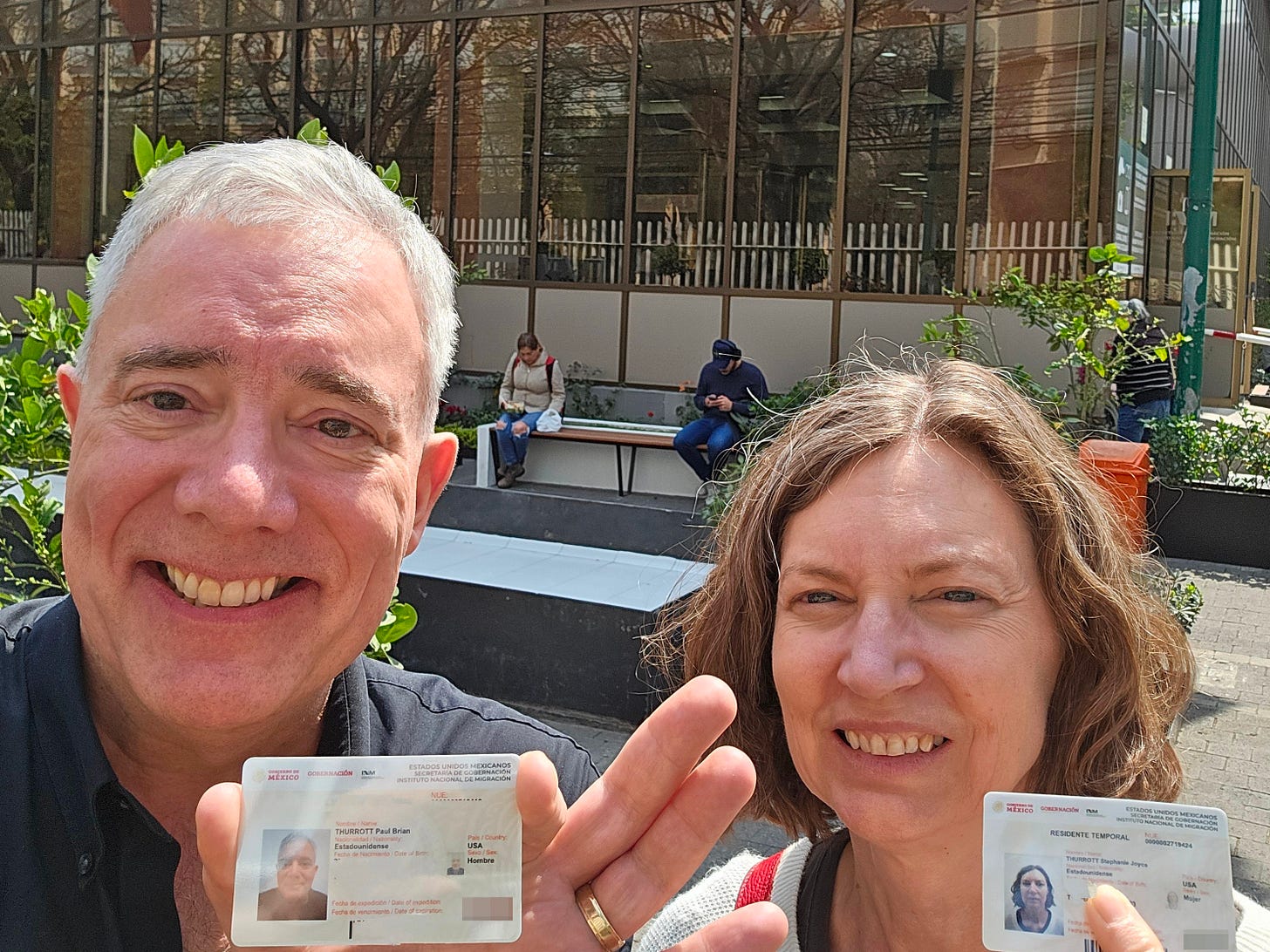

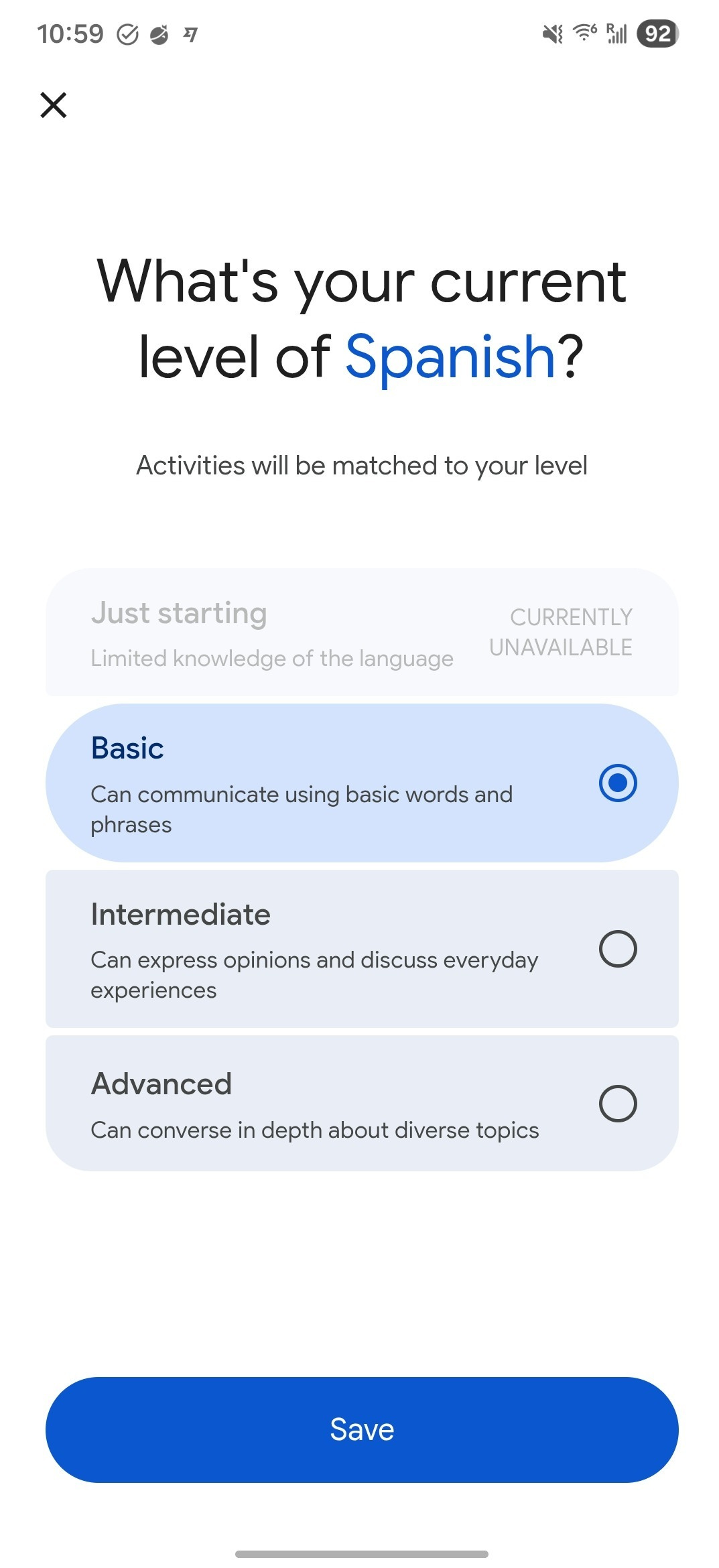
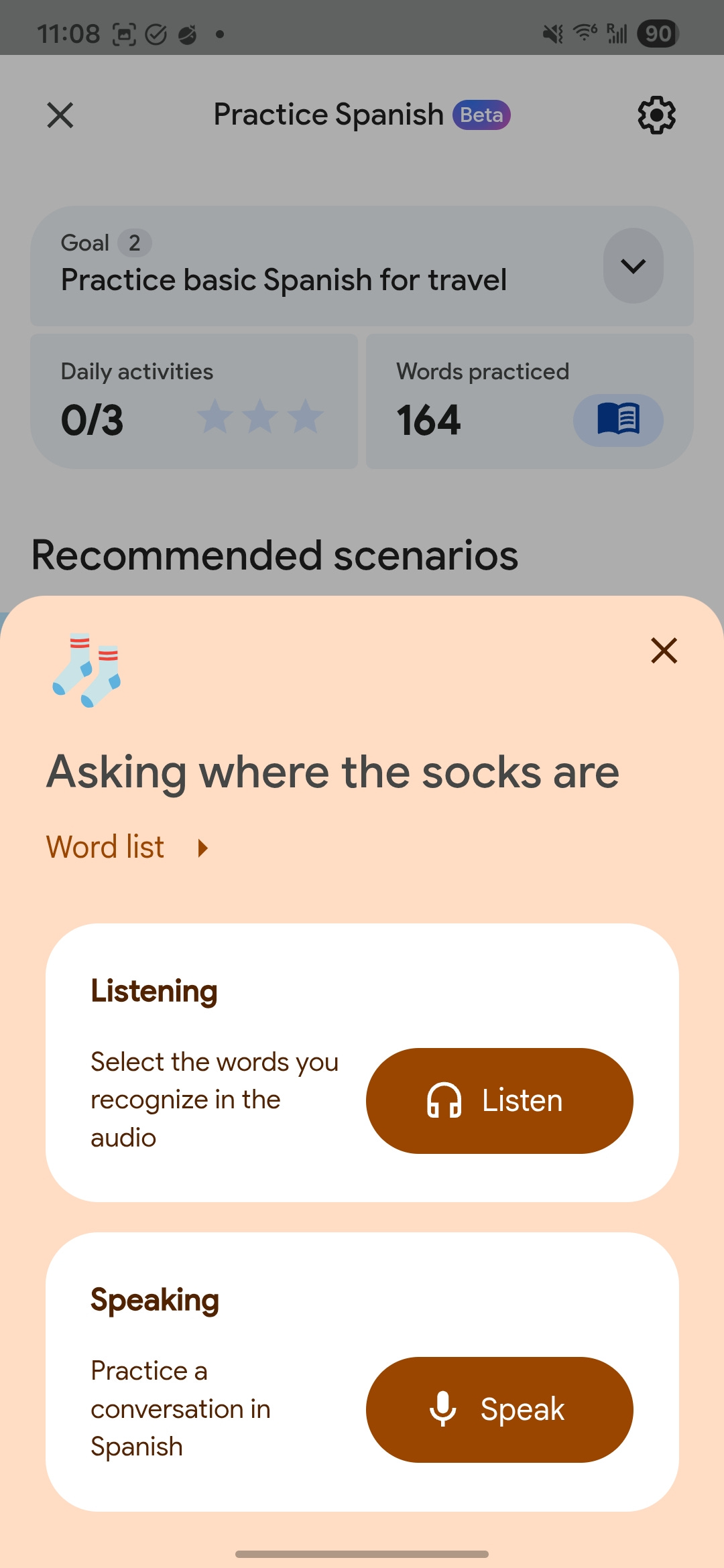
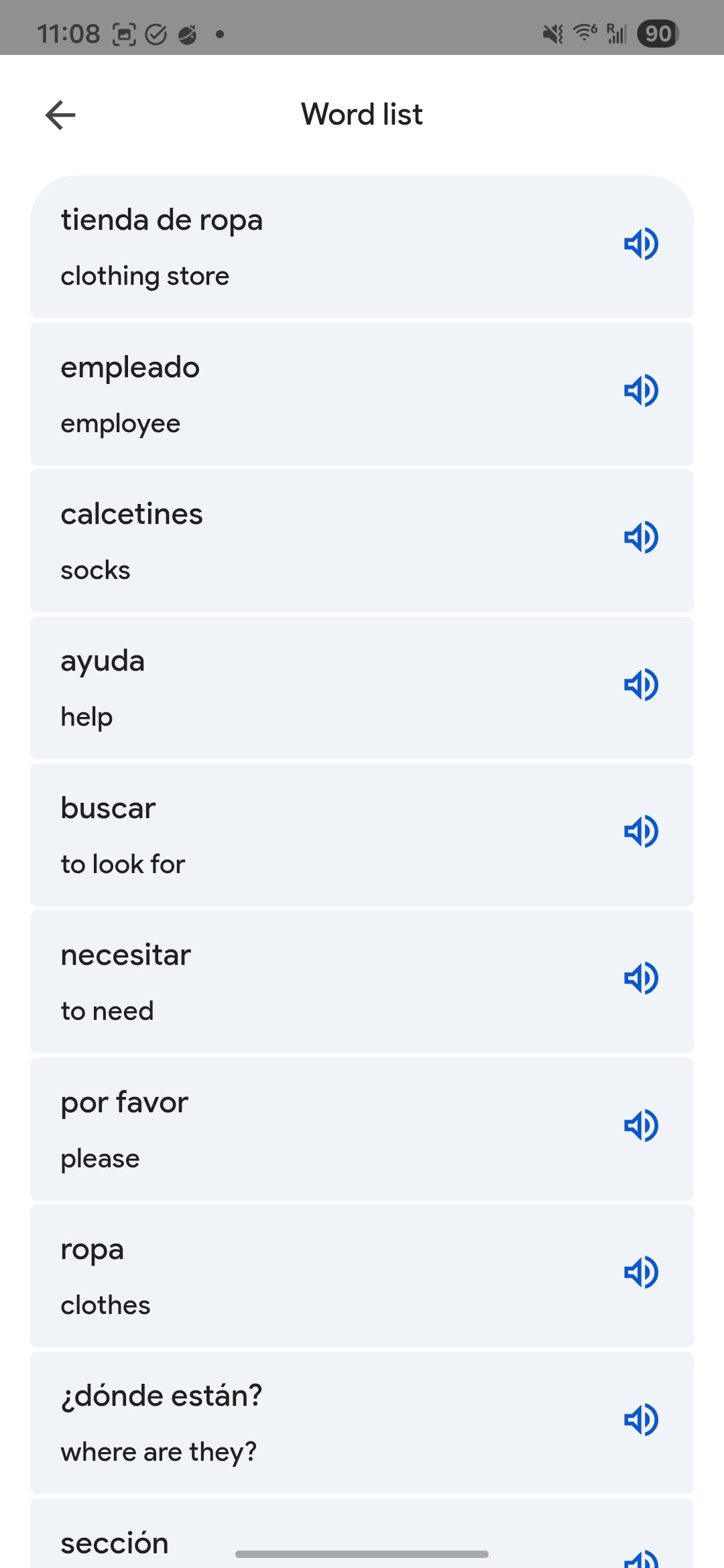
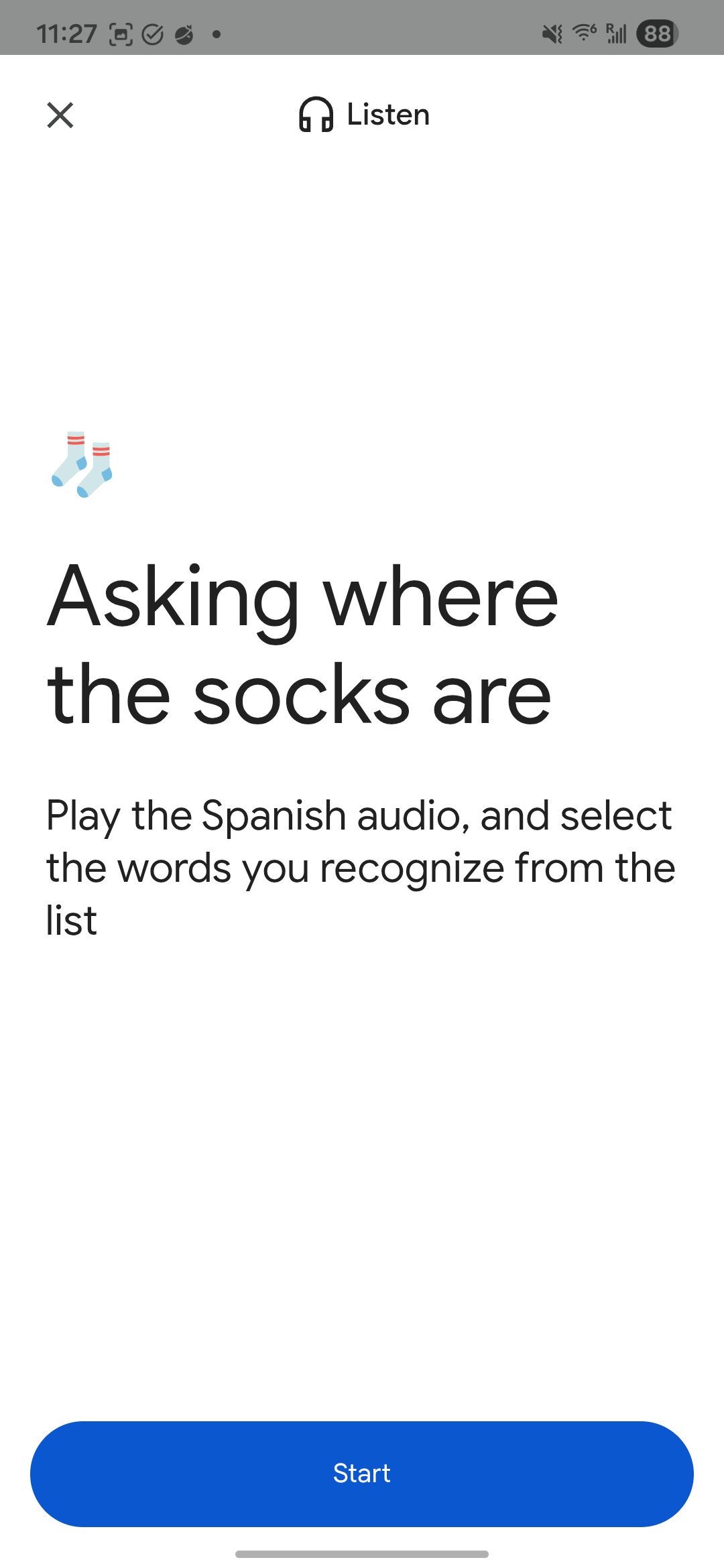
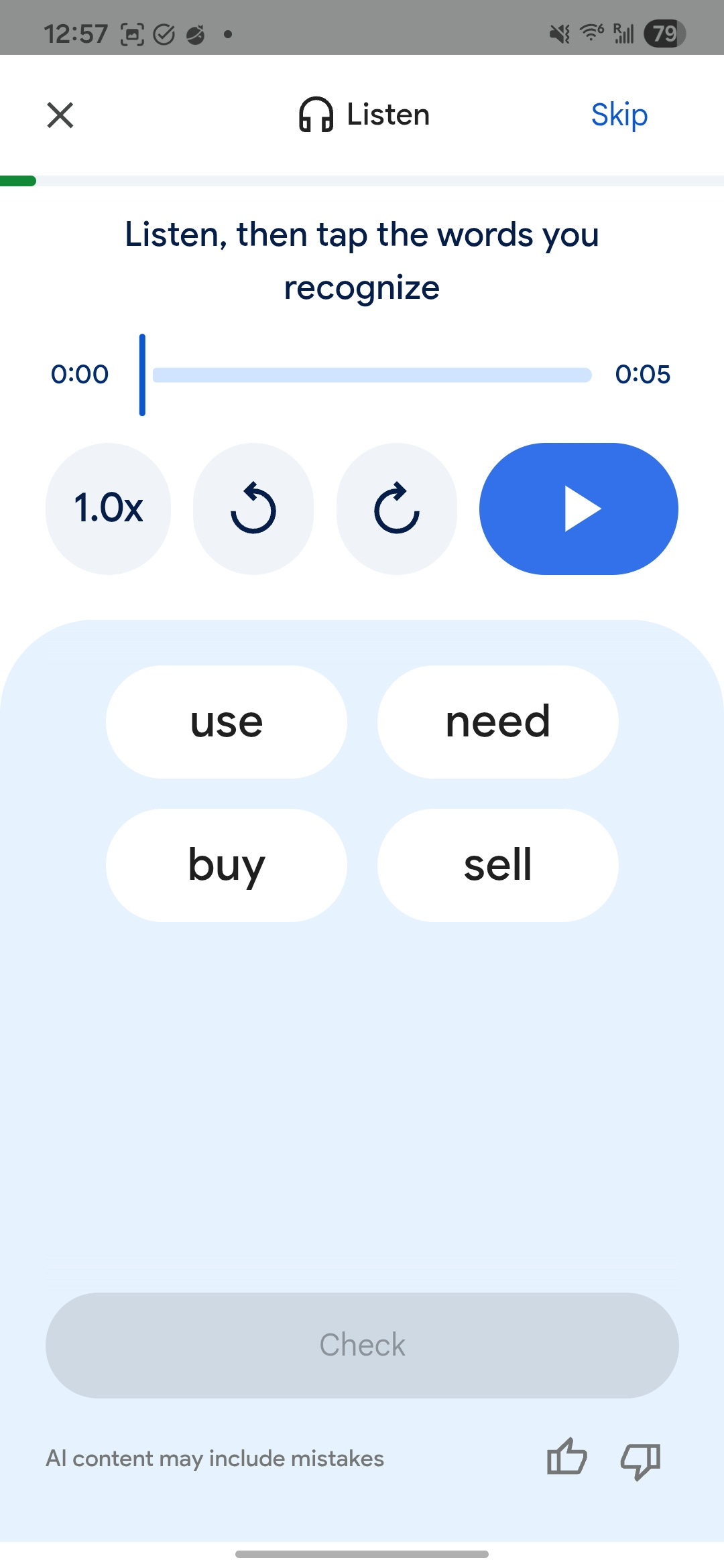
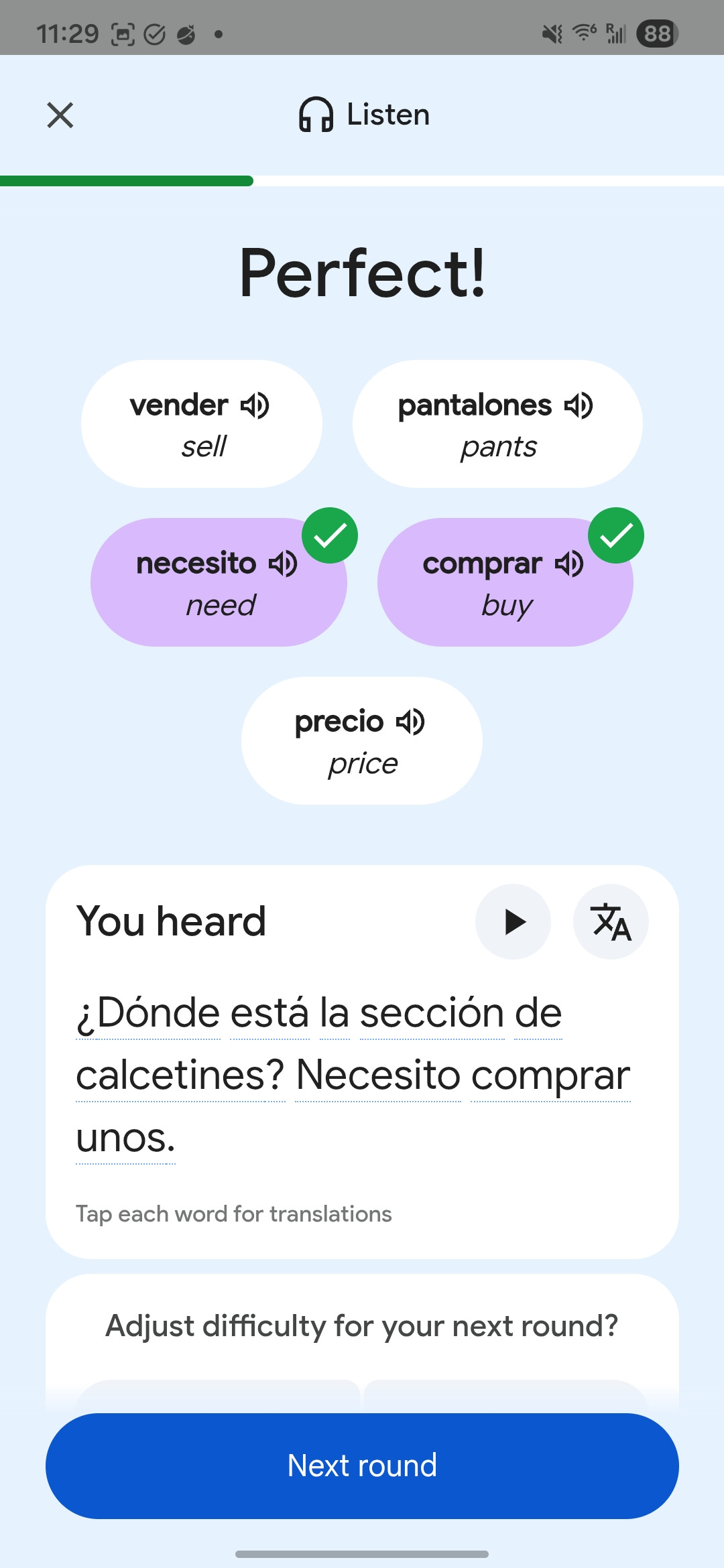
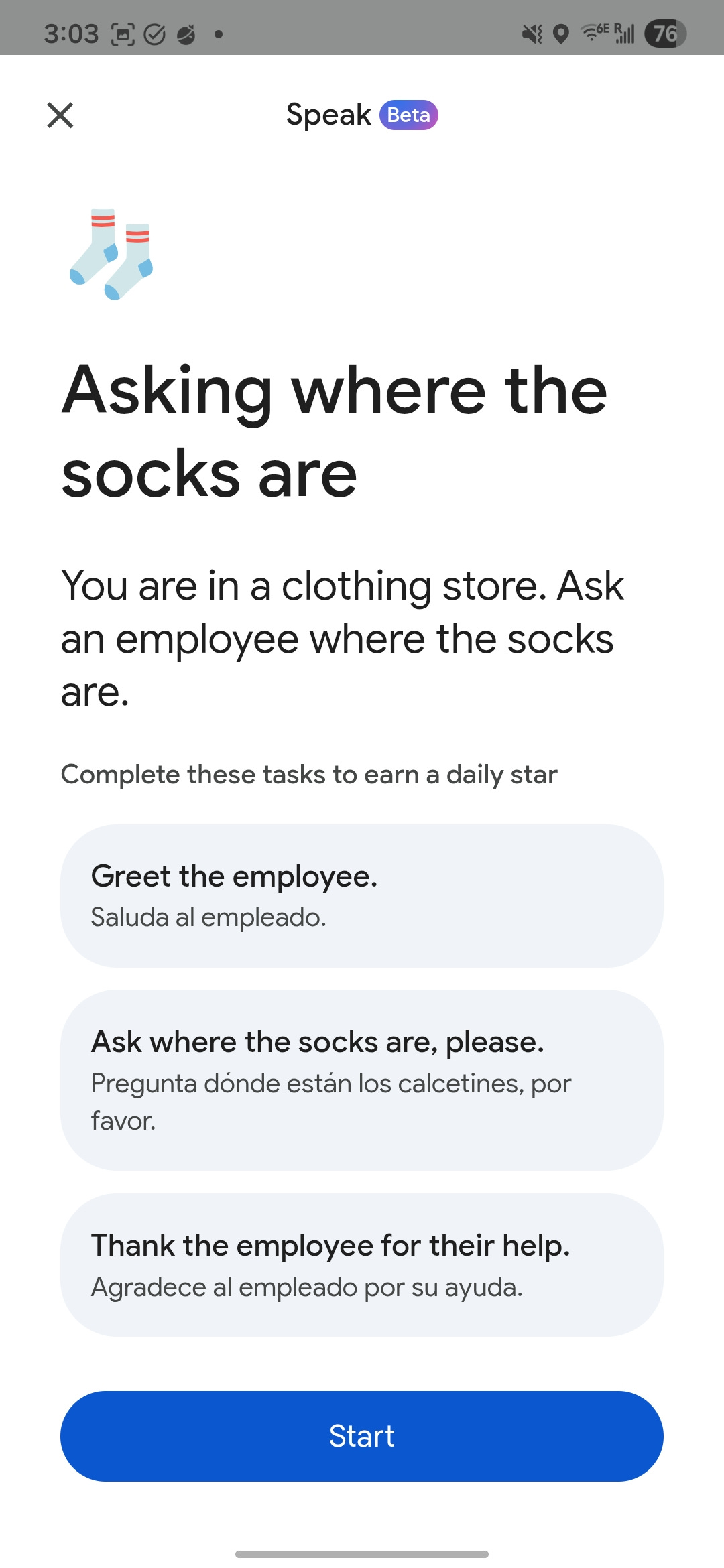
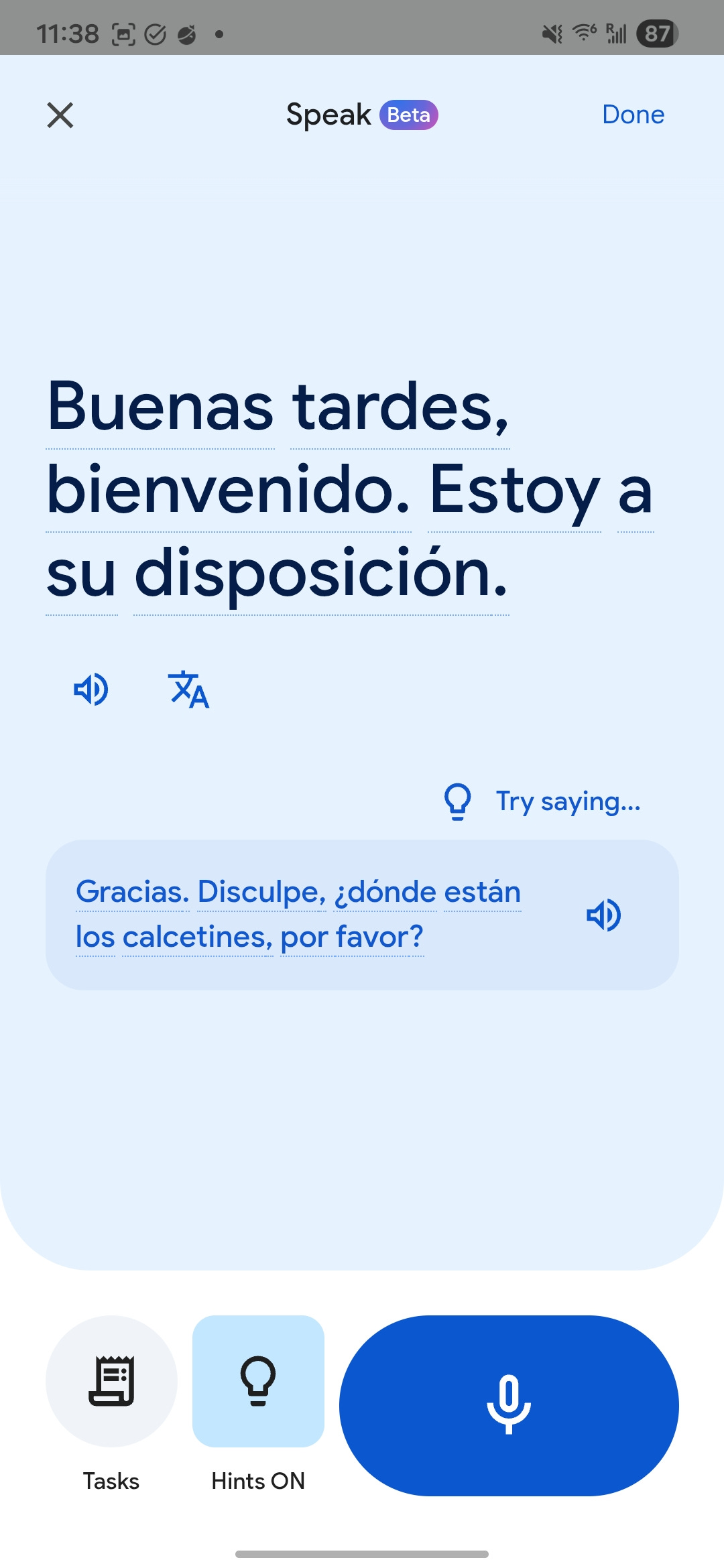
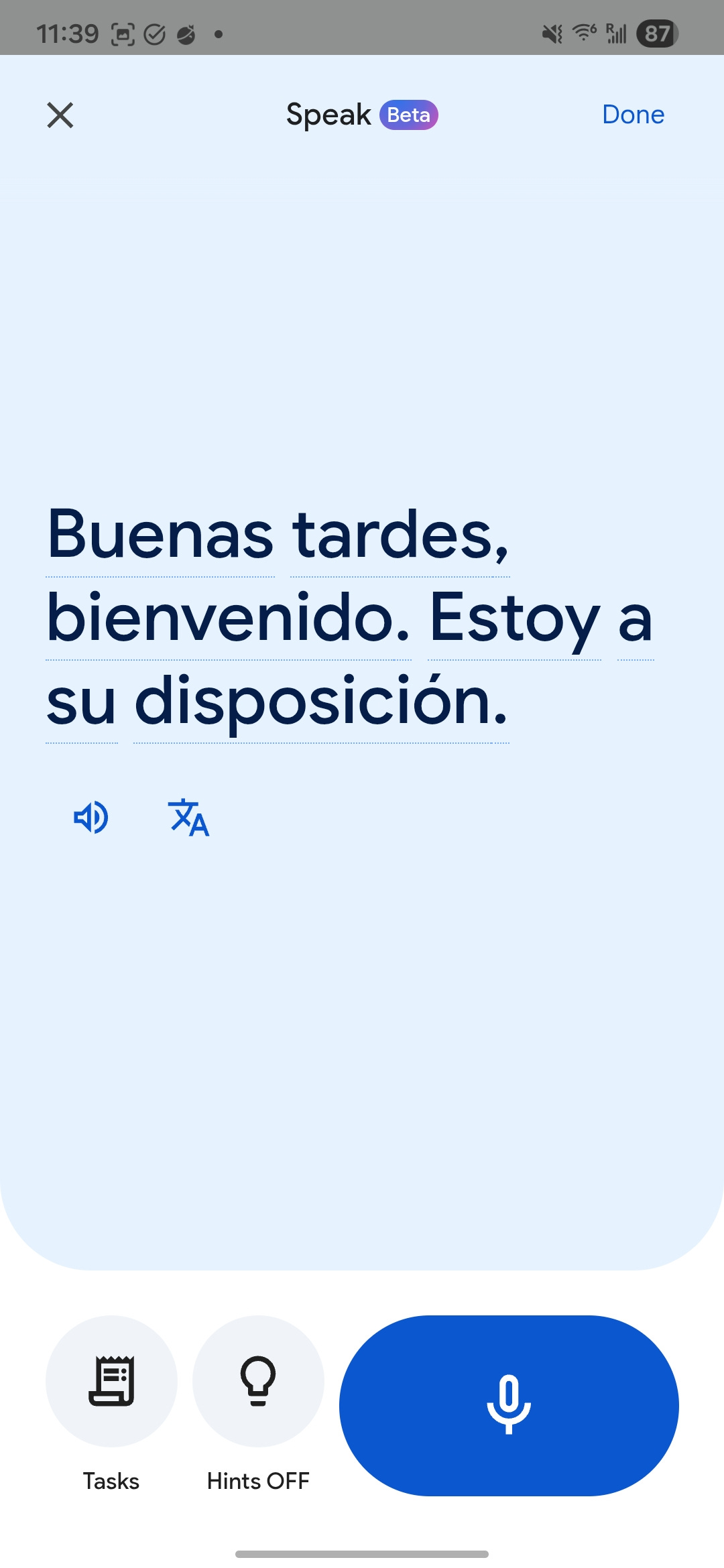
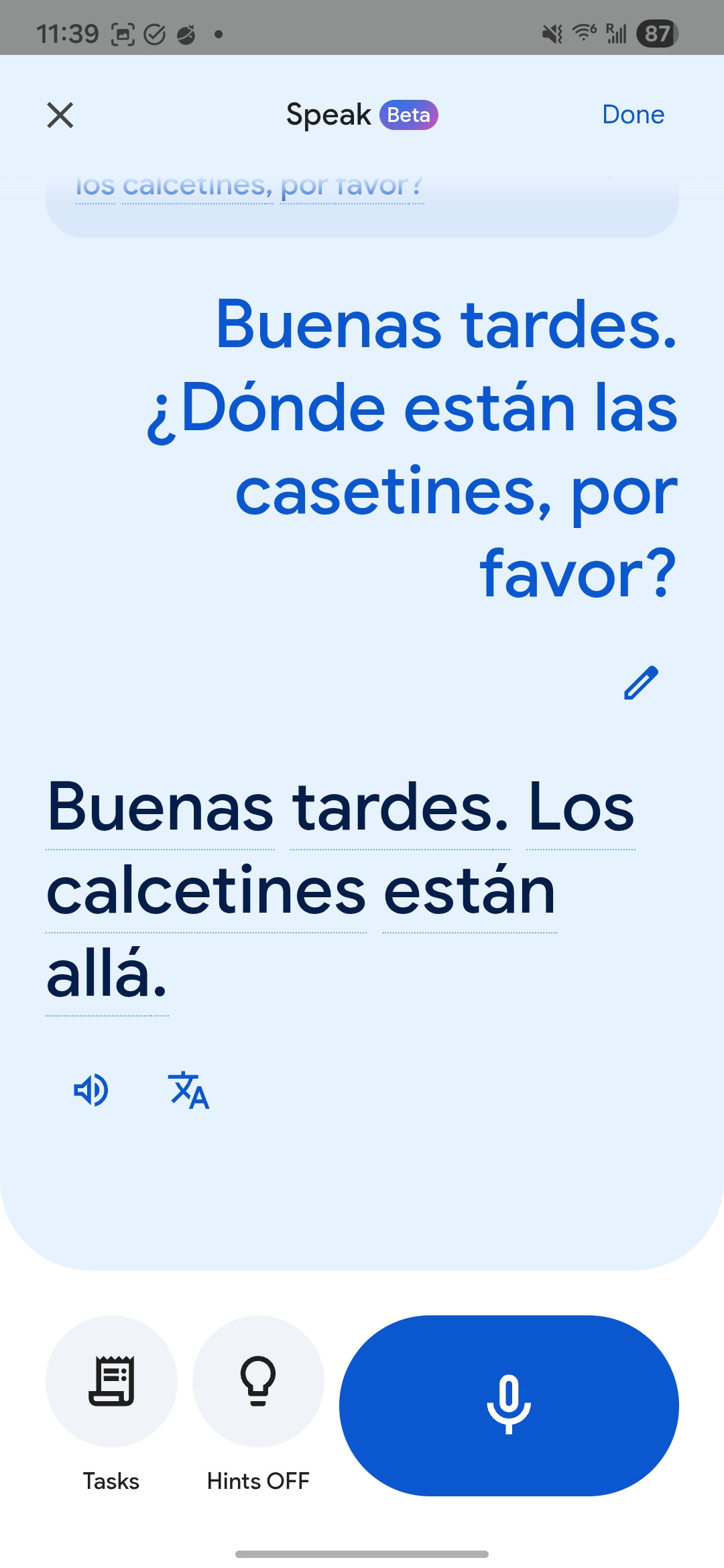
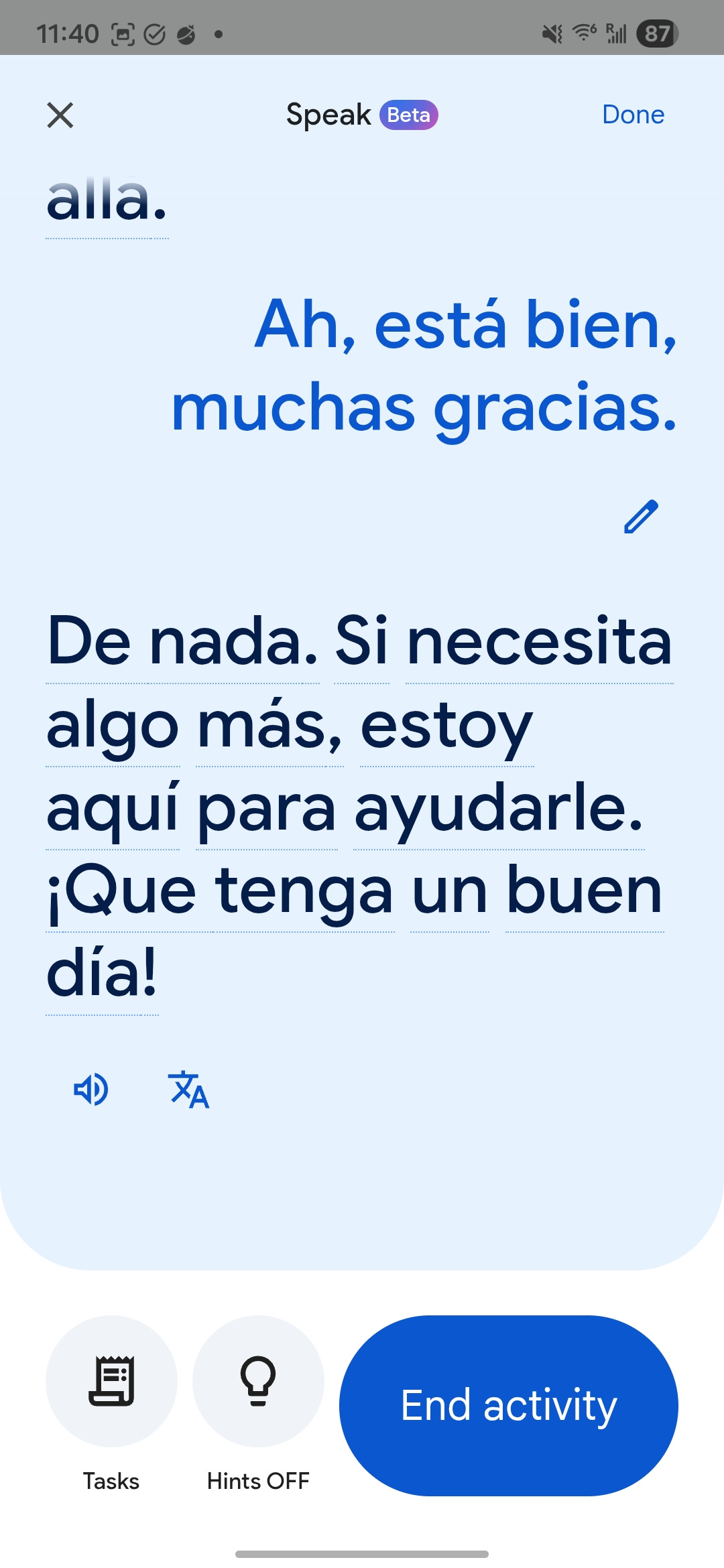
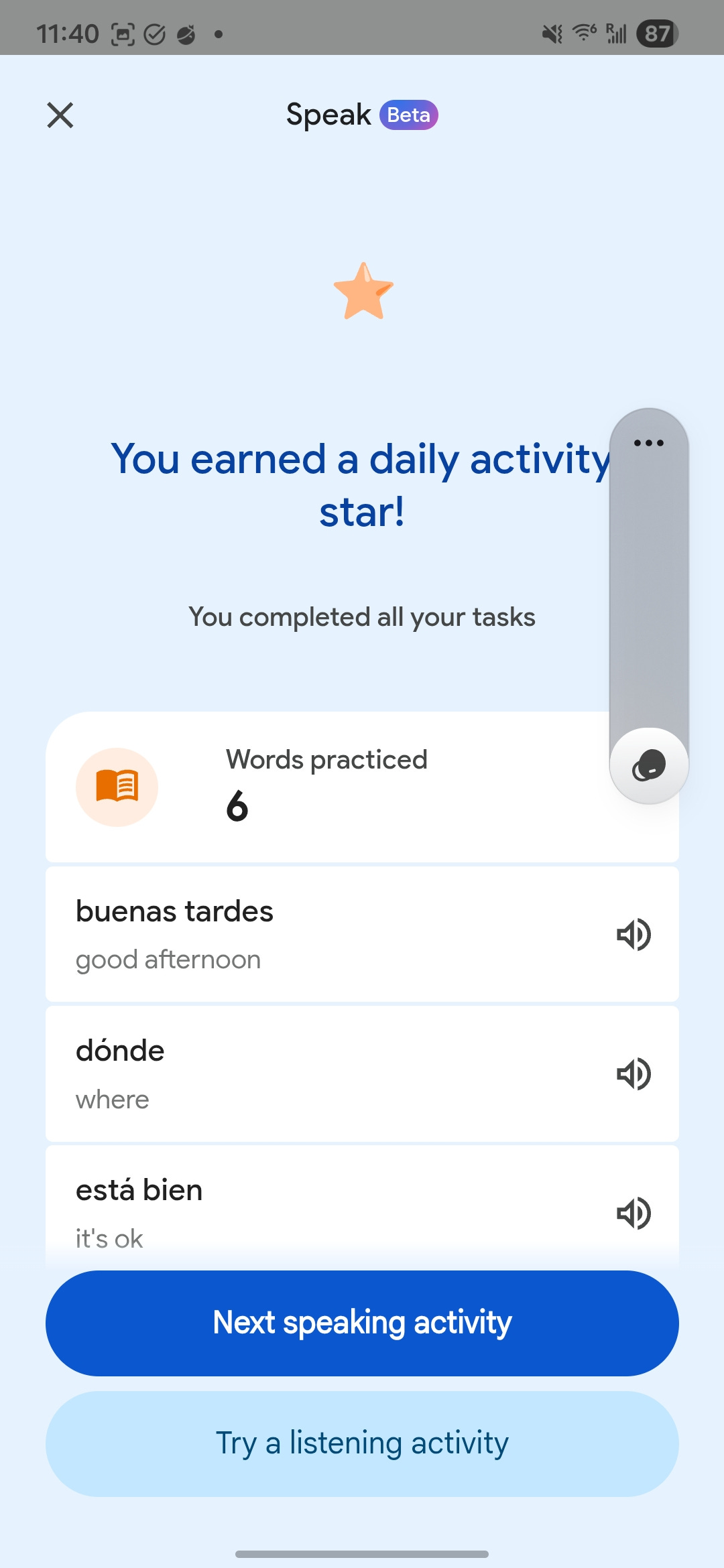
I've heard lots of different strategies, but the most important thing I've found is to be constantly practicing. If you can, practice with native speakers as much as possible. If you can't, it looks like this Google Practice is a helpful substitute!
I also always recommend that my students listen to music and watch movies in the language they're learning. (Very easy for those learning English thanks to Hollywood.)